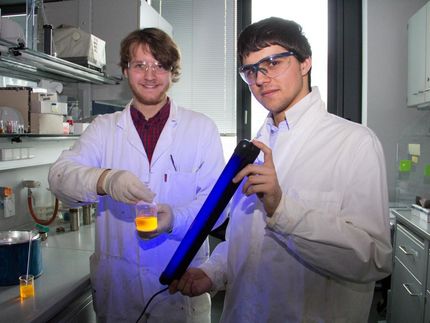Gaining control over soft-molecule synthesis
By gaining control over shape, size and composition during synthetic molecule assembly, researchers can begin to probe how these factors influence the function of soft materials. Finding these answers could help advance virology, drug delivery development and the creation of new materials.
"We approached this new research concept not by trying to fix a problem, but by asking what is possible when it comes to soft-molecule synthesis," said Damien Guironnet, a chemical and biomolecular engineering professor at the University of Illinois at Urbana-Champaign and lead author of a new study. "What if we can gain control over things like shape, size and composition during molecular synthesis - what does that mean?"
The findings are reported in the Proceedings of the National Academy of Science.
For years, scientists have struggled to clarify how nanoparticle shape and size influence their behavior within living tissue, the researchers said. "The size of the synthetic molecules we are creating correspond to the size of viruses," said Dylan Walsh, a chemical and biomolecular engineering graduate student and study co-author. "Observations made from controlling these factors will allow researchers to probe these types of questions."
The team combined classic chemical synthesis techniques and basic chemical engineering principles. They introduced precise control over the polymer formation sequence via the flow rate of the building blocks used. By altering flow rate, the new process can yield soft matter with unique architectures, the researchers said.
"We use mathematical modeling to predict the shape, size and composition of molecules we create and use computer-guided synthesis in the lab to adjust the flow rate of the mixtures that control the architecture of the polymer," Guironnet said.
The researchers felt it was not enough to simply state that they can do this - they needed to prove it.
"Our mathematical modeling does not include any assumptions so there is really nothing else that can be formed other than what we model, but math is not something you can see," Guironnet said. "Shape is something we can see, and we were able to verify with microscopic imaging that we formed polymers consistent with what we predicted."
The team achieved this with synthetic molecules that are soluble in organic solvents, but the next step will be to move onto water-soluble molecules. "If we truly want to better understand our immune response and improve drug-delivery specificity, we need these to be water-soluble so that they can work in our bodies," Guironnet said.
The researchers view this work as a big step forward in advancement of soft-material synthetic polymer science.
"We have access to new building blocks, and now we can work on figuring out how we can use these blocks to assemble new materials at the molecular level," Walsh said. "We think of it as playing with Legos to see how the shape of the individual building blocks influences the final product."
Most read news
Other news from the department science

Get the life science industry in your inbox
By submitting this form you agree that LUMITOS AG will send you the newsletter(s) selected above by email. Your data will not be passed on to third parties. Your data will be stored and processed in accordance with our data protection regulations. LUMITOS may contact you by email for the purpose of advertising or market and opinion surveys. You can revoke your consent at any time without giving reasons to LUMITOS AG, Ernst-Augustin-Str. 2, 12489 Berlin, Germany or by e-mail at revoke@lumitos.com with effect for the future. In addition, each email contains a link to unsubscribe from the corresponding newsletter.






















































